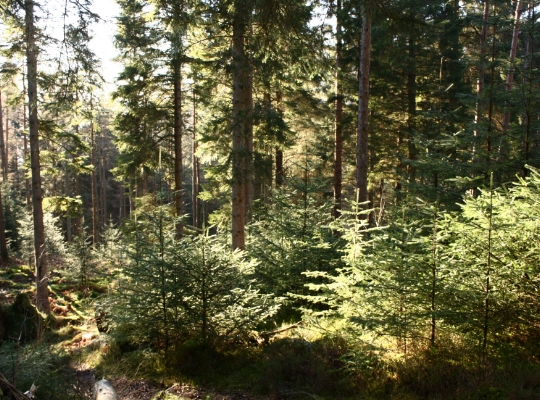Structural diversification in woodland and forests refers to mixed tree heights in mixed aged stands.
Forests with a diverse structure are more resilient and may be better able to withstand some of the risks from climate change compared to even-aged uniform stands. Structural diversity can be increased both at the stand scale and forest/landscape scale.
The structure of the stand is determined by the age and age structure of the trees, the presence of any understorey and the mix (if any) of species or types (broadleaf/conifer, evergreen/deciduous). Management influences all of these, and the key choice for many managers is between even-aged stands and continuous cover forestry (CCF).
Benefits:

For further advice see the UKFS Practice Guide ‘Adapting forest and woodland management to the changing climate’
Printed copies are available to purchase from Forest Research.
"*" indicates required fields
The following risks may be reduced if the adaptation measure is applied appropriately:
Low impact silvicultural systems have been adopted in an exposed site to help reduce the risk of storm damage and other climate change impacts.
A range of adaptation measures including thinning were implemented on a public forest estate to help combat the threat of more frequent drought episodes.